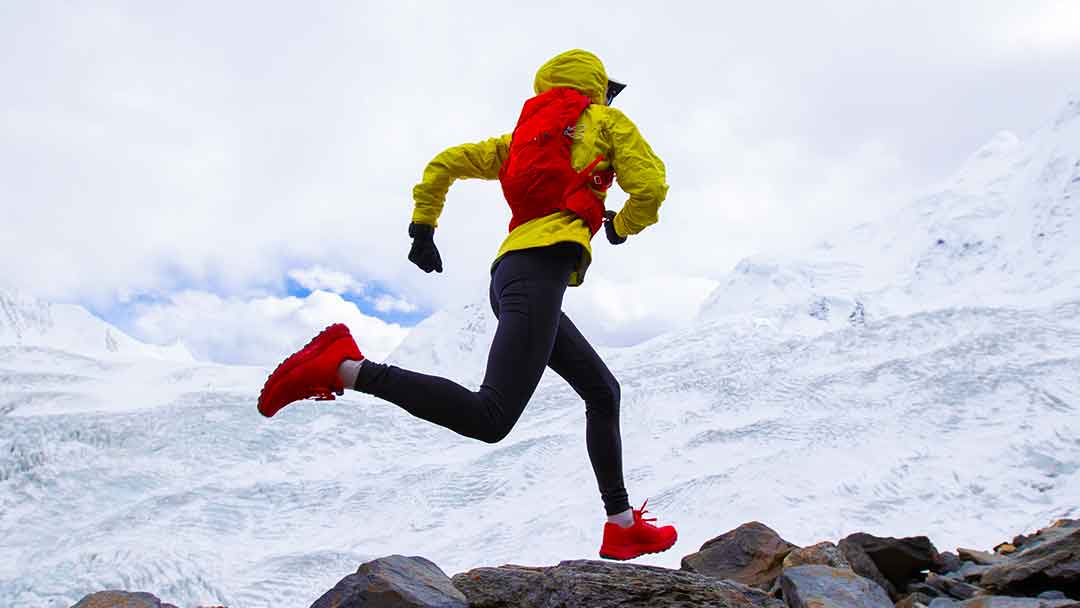Is Fastpacking a Sport? A Pro Weighs In

As an Amazon Associate we earn from qualifying purchases made on our website. If you make a purchase through links from this website, we may get a small share of the sale from Amazon and other similar affiliate programs. You can read our complete legal information for more details. By using this site, you agree the information contained here is for informational purposes only. For specific medical questions, consult your doctor. NO information on this site should be used to diagnose, treat, prevent or cure any disease or condition.
What is fastpacking? The answer to this issue is elusive because fastpacking is a hybrid kind of wilderness travel; imagine a combination between trail running and backpacking.
Fastpacking is a technique in which an “athlete” uses a combination of jogging, hiking, and power hiking to cover huge distances quickly in the backcountry; therefore, it isn’t a sport.
Understanding the “Hybrid” part
In the backpacking community, terms like “ultralight,” “thru-hiker,” and “cold-soaking” may mean more to you than they do to a person who doesn’t go hiking regularly.
However, a term that appears innovative or ambiguous is thrown about every now and then. The word “fastpacking” is widely used to describe a particular style of backcountry travel, but what does that entail? Is this the definition of frantic backpacking?
No, I don’t think it’s a logical progression from light backpacking.
As a result, fastpacking is one of the most exciting forms of travel. Fastpacking seems like a cross between a trail ultramarathon and a race where people run and hike to cover ground.
One notable difference between fastpacking and ultrarunning is that fastpackers carry ultralight backpacking gear to set up camp and sleep on the route, whereas ultrarunners do not.
A fasterpacker, on the other hand, is self-sufficient. Long-distance backpackers and section hikers spend their days in the mountains, moving slowly and carrying heavy loads.
Because fastpacking combines ultrarunning and backpacking, it appeals to many people. You can even see the major differences in this popular article Fastpacking vs. Ultralight | What’s the Difference?
In the middle of the wilderness, it’s a novel way to put your body through its paces across lengthy distances.
Because you are moving faster than a hiker, you’ll have more time to do other things, and the physical exertion will make it more appealing. Fastpacking training is my go-to for cardio and aerobic exercise, and I drop my training routine here.
This hybrid of ultrarunning and backpacking gives you the best of both worlds: speedier travel than would be possible on a traditional backpacking trip but the opportunity to explore more of the area you’re traveling through. This would not be possible on a non-stop ultramarathon.
Additionally, fastpacking is quite versatile. When it comes to challenging and rough terrain, distances can range from only a few dozen feet to several hundred miles. A person’s athletic and technical abilities are the only limitations, making it as diverse as backpacking.
Fastpacking is an activity and skill all in one, and if you’re ready to hit the trails, be sure you read the ultimate guide. This guide was created to help the novice and pro take their fastpacking to the next level.

How do FKTs factor in
FKT’ Fast Known Time‘ is commonly used in the trail running world. It’s a free-for-all in which the only rules are your own personal best times along a predetermined route.
Most FKT competitions take place on well-known trails, such as the Pennine Way in the UK or the Pacific Coast Trail in the US, despite the growing number of unique, one-of-a-kind routes.
It’s easy to see why self-organized challenges have increased in popularity in light of the current global climate and the fact that they are entirely free.
Since no races were held during most of the pandemic, many races have returned in a very different format and under varied rules worldwide. This scenario is not unique to the United States.
FKTs have torn up the trail running rule book. Chasing the clock defies most organized race structures, regulations, and compliance.
It allows people to take up a project whenever they choose, no matter the day or time.
This degree of adaptability in both planning and execution comes in handy when dealing with external constraints like the weather or work obligations.
Official Races
Of course, there are official races, but they have specific rules to ensure safety.
Among them, we’ll need to provide race organizers with kit checks, medical documents, and emergency contact information.
After all, running in adverse weather conditions might leave us feeling exposed. Trail running is no exception to the dangers of the hills. Anyone contemplating an official FKT should research, assess the risks, and ensure they are adequately prepared.
So, is Fastpacking a sport?
Fastpacking is not a sport; it will never be in Olympics. If it was to become more organized and have a sporting governance, would I even want to do it? Would it even be Faspacking anymore?
It would technically become multiday staged ultramarathons, I guess, where you are expected to carry your own kit, but you have the support of the race organizers.
In my opinion, multiday staged ultramarathons are great, but they are not fastpacking.
Competition of FKT
The rise of the FKT does muddy the water. They have boomed in popularity recently, and they are promoted like sports by many trail-running brands trying to showcase their athletes and gear.
The Fastest Known Time website is a centralized place that lists and ranks attempts of all the major routes in the world and determines what level of proof is acceptable to be deemed a legal attempt.
Their category of Unsupported Attempts is where you have to carry everything, apart from water, so it’s basically Fastpacking. So, that is the closest Fastpacking comes to being a sport.
Conclusion
Personally, I class outdoor life as my own personal sport. That includes dog walking, hiking, running, camping, FKTs, Ultramarathons, and Fastpacking.
These are all things I like to do, and they all help each other. I do not train specifically for any of the above, I merely do all of them, and they all increase my fitness so that I can do the other ones better.
They all increase the amount of time I can spend in the great outdoors, allow me to enjoy nature, allow me to go on adventures, and get me away from this laptop! Now do the same and go plan your next fastpacking excursion!
Fastpacking is not a sport, but it is my sport.



